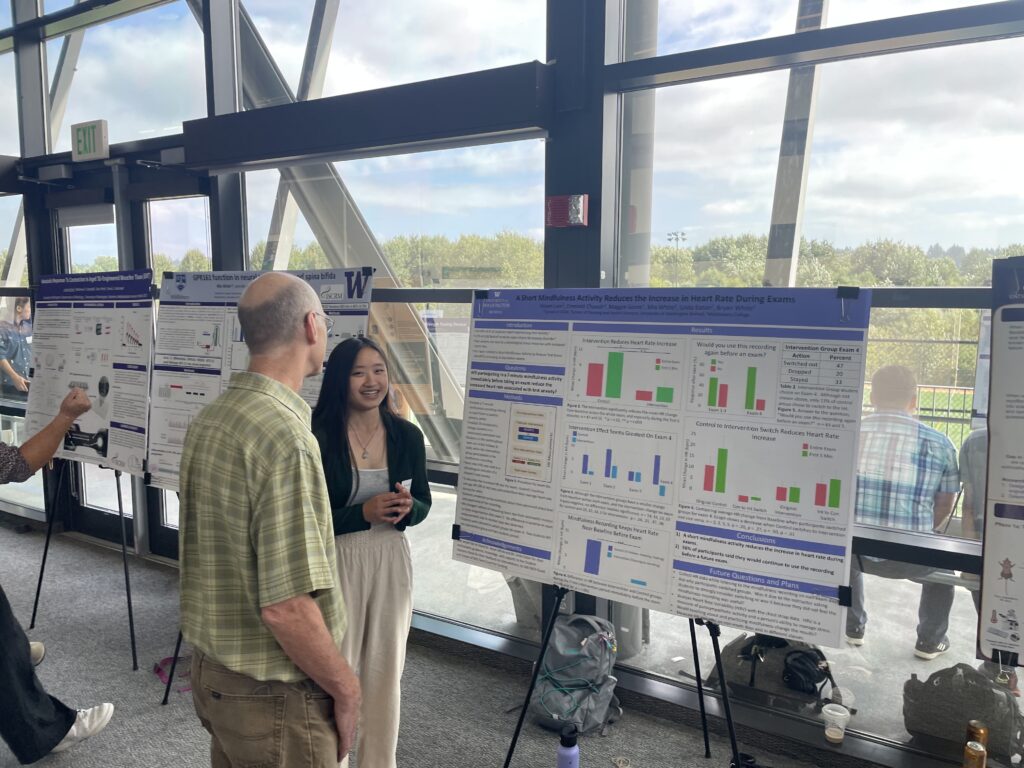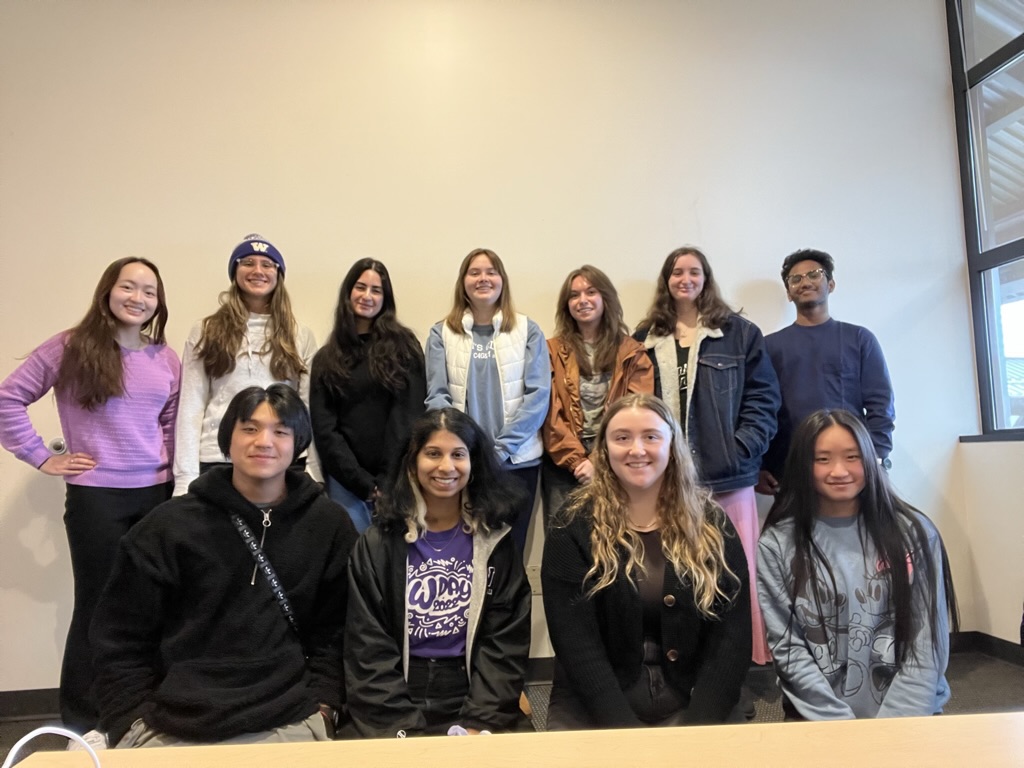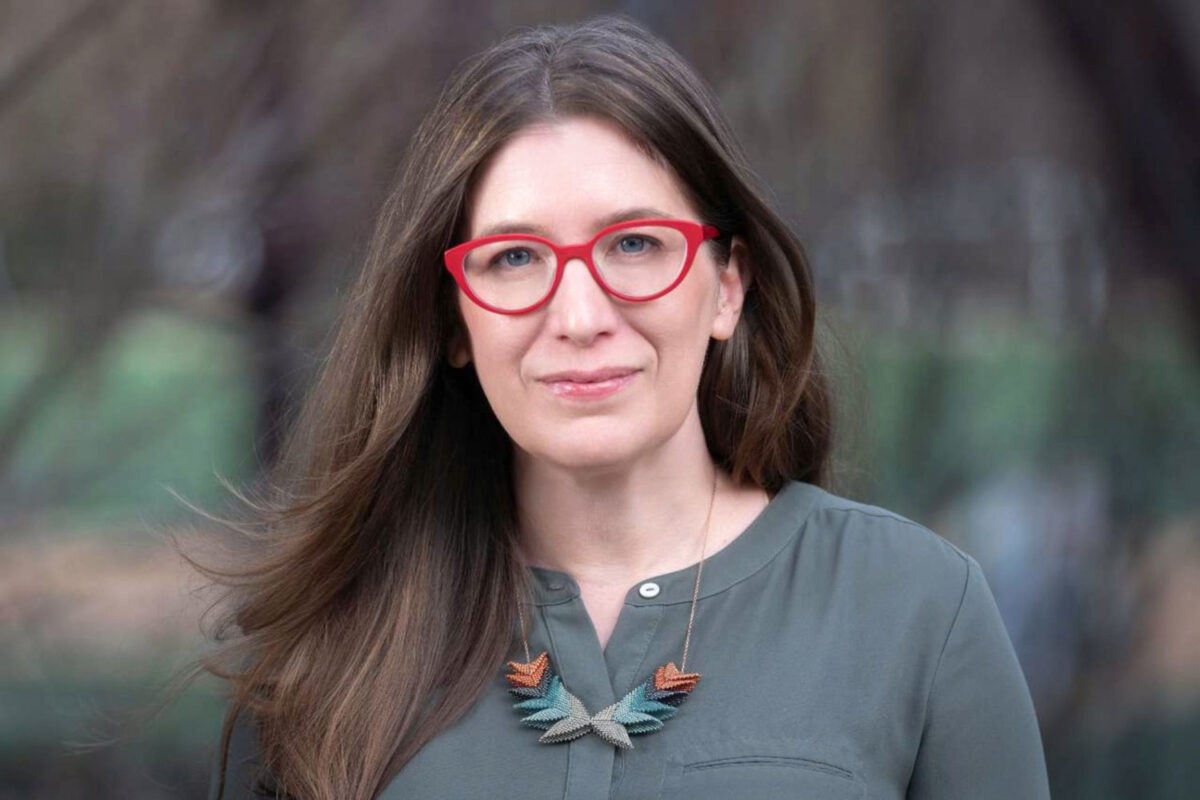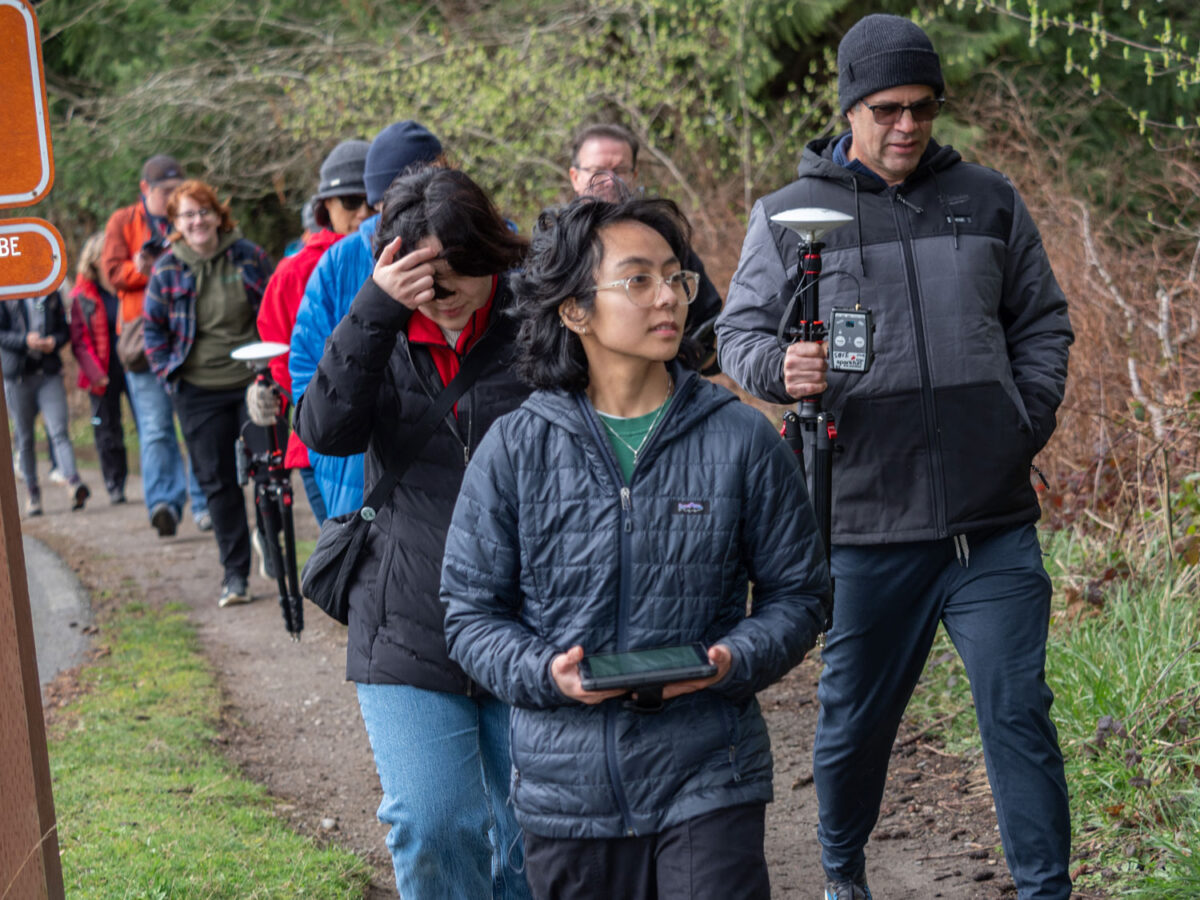Most students can become a bit nervous before taking a test. For some that nervousness can escalate to panic. This can cause racing thoughts and an inability to concentrate — and is often paired with physical symptoms such as an increased heart rate.
When severe, test anxiety can derail weeks, and even months, of hard work.
In 2017, researchers at the University of Washington Bothell conducted a Healthy Minds Study and found that 22% of students met the criteria for anxiety disorder. “As striking as this data is, it does not include the number of students who do not have anxiety and yet are still deleteriously affected by negative feelings and anxiety in stressful test-taking situations,” said Dr. Bryan White, teaching professor in UW Bothell’s School of STEM.
White has always been open with his students about his own battle with anxiety and depression and said in doing so students have felt comfortable disclosing their struggles, too. “About 15% of students in each of my classes are dealing with generalized anxiety,” he said, “and then I have another 15% who also struggle with anxiety but just surrounding test-taking.”
Recognizing the severity of the situation, White partnered with Dr. Linda Eaton, assistant professor in the School of Nursing & Health Studies, to see if they could find a way to mitigate students’ stress.
Power of mindfulness
In October 2020, Eaton was featured in a UW Bothell news article describing her research using hypnosis and relaxation recordings to manage chronic pain in cancer survivors. “Bryan read the article and contacted me to tell me how interested he was in my research,” Eaton recalled. “We met and decided to collaborate on our current study which was funded by UW Bothell’s Scholarship, Research and Creative Practice Grant program.”

Eaton and White thought mindfulness could work in reducing test anxiety in students, too. To find out, the professors put a call out to see if any students would be interested in joining the research team to evaluate a mindfulness recording with students enrolled in White’s introductory biology course. To their delight, more than 50 applied. “In the end we could only hire three,” Eaton said, “but seeing there was that much interest was really nice.”
The student researchers hired include Emerald Chuesh, a junior majoring in Health Studies and minoring in Biology; Maggie Goros, a senior majoring in Biology; and Vivian Lam, a junior majoring in Biology and minoring in Health Studies.
One of the first things they did was create an advisory board that represented each of the University’s five schools.
“We felt it was important to get a diverse range of majors in our study because text anxiety doesn’t just affect people from one specific major — it can affect anyone. We wanted a good representation with people from different backgrounds and experiences,” Lam said. “I want to note that we had more than 68 applicants which I think speaks to how many people want to look to mindfulness to help with feelings of depression and anxiety.”
Testing the tool
Next the student researchers got to work on the mindfulness recording, which is roughly seven minutes long and incorporates pieces from different mindfulness practices. “There is a breathing exercise, a body scan and a segment on positive affirmations,” Goros said. “We tested a variety of mindfulness practices on our student panel, and the three we included proved to be the most impactful.”
Not only did the student researchers decide on what would be in the recording, but they decided on who would be the voice for the recording as well. “After we created the transcript, we solicited different readers to decide whose voice would be the most calming,” Chuesh said. “We also tested them on the advisory panel and then did individual coaching with the reader to make sure it appealed to the most people.”
Once finalized, the team, including Eaton and White, put the recording to the test. They used a randomized controlled trial design where students in White’s introductory biology course were randomly assigned to one of two groups — the intervention group who listened to the mindfulness recording or the control group who did not.
All students, regardless of their group assignment, completed questionnaires about their stress level prior to each exam and wore a wrist monitor while taking the exams to record heart rate data, a physiological indicator of stress.
Promising results
Students in the intervention group listened to the recording immediately prior to taking the exams whereas students in the control group used the seven minutes to follow their normal routine.

“We found that listening to the recording reduced the increase in heart rate due to the exam by an average of eight beats per minute,” White said. “Fifty-six percent of the participants said they would continue to use the recording on future exams.”
While the initial results seem promising, Eaton and White said because of the small sample size of 29 they need to test the intervention in a fully powered study to determine its effectiveness in reducing test anxiety.
“We are going to submit for further funding to continue studying this intervention,” Eaton said. “And we hope to have students as part of the research team because they are invaluable.”
Listen to the mindfulness recording to help alleviate test stress or anxiety.
Allow yourself to be still for a moment… Let’s start breathing deeply in through your nose and out through your mouth.
In through your nose, and out through your mouth. You can close your eyes or keep them open with a soft gaze downward a few feet in front of you. Seated here, feel the sensations of your body, and the support of the chair beneath you.
Just breathe, soften, and begin to tune into your breath as it flows to your lungs … feeling the natural flow of breath.
Don’t worry about how loud your breathing is or if anyone can hear it
And there’s no need to try and ignore any noise… or distractions
going on around you
You don’t need to do anything to your breath. Not long. Not short. It’s natural, and notice where you feel your breath in your body. When one breath ends, the next breath begins.
Now let’s relax any areas of tightness or tension.
You can start at the top of your head and just notice your head. . .
Bring your attention to the muscles around your jaw, and relax your jaw if it is clenched.
Bring your attention down to your shoulders…perhaps letting them fall if you notice they are tight.
Allow your attention to flow down through your body…through your torso…your hips…down through your legs
[Pause] Just feeling your physical presence.
[Pause] Just sitting here as you breathe in, and you breathe out.
Now as you do this, you might notice that your mind may start to wander.
You might start thinking about other things.
If this happens, this is not a problem. It is very natural.
Just notice that your mind has wandered…allowing for the reality of everything that’s happening around you in your life at this time…in this day…and just be here to acknowledge how you’re feeling right now…allowing for any thoughts and feelings.
You can think or wander in your head softly, and then gently redirect your attention back to your breathing.
You don’t need to do anything to your breath. Not long. Not short.
It’s natural. . . notice where you feel your breath in your body. When one breath ends, the next breath begins.
Think about how anything that has negatively affected your day up until this point
and with each exhale, you are simply going to imagine any unnecessary stress these events are causing you to feel just ease away.
Breathing in, gathering any negative thoughts, and breathing out, letting those thoughts drift out of you like clouds in the wind.
Now I wonder if you can imagine what it would feel like to be a drop of water in the ocean, individual, yet connected to all those other drops.
Rising and falling with the undulation of the waves.
With no place to go and nothing to do.
Just being, relaxing, and allowing yourself to be supported by all those other drops beneath you.
Breathing deeply…take another moment to visualize how you want the rest of the day to go Imagine achieving any goals and successes at the end of the day and how that will make you feel.
Create a mental picture of what that looks like and take a moment to play that out in your mind.
Whenever you’re ready…we’ll bring this exercise to a close and you can slowly, open your eyes. . . excited and ready for the path that lies ahead of you.
More to learn
In the next study, Eaton and White hope to gather more information as well as educate students about mindfulness. “I would like to get heart rate data from students during lectures, group work and exams,” White said. “In addition, I think it would be great to do some training on mindfulness prior to exposing students to the recording. I am also really interested in exploring breathing techniques as they have been shown to really calm a person’s mind and body.
“I could go on because there is just so much to explore,” he said. “I want to be working on this for the next 15 years.”
Eaton shares a similar excitement. “It’s been really great to have collaboration across schools and leverage our different expertise,” she said. “We look forward to conducting this next study, and hopefully we will have more data and insight to share in the next year or two.”




